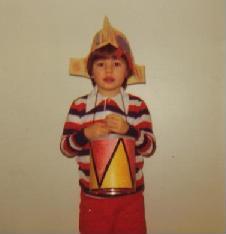 Throughout the history of warfare musicians have always played an important role on the battlefield. Military music has served many purposes including marching-cadences, bugle-calls and funeral dirges. Fifes, bagpipes and trumpets are just some of the tools that were used to instruct friend and intimidate foe.
Throughout the history of warfare musicians have always played an important role on the battlefield. Military music has served many purposes including marching-cadences, bugle-calls and funeral dirges. Fifes, bagpipes and trumpets are just some of the tools that were used to instruct friend and intimidate foe.
Perhaps the most notable of these instruments was the drum. From as far back as the ancient days of Babylon, percussion rallied the troops on the field, sent signals between the masses, and scared the enemy half to death. During the Revolutionary War, drummers in both the Continental and English ranks marched bravely into the fight with nothing but their rudiments and sticks to protect them.
Remarkably, some of these musicians were in fact, very young boys, not quite yet into their teen years. That group however, was a minority. Despite popular culture’s portrayal of the little “Drummer Boy,” boys were actually an acceptation to the rule in early American warfare. According to The music of the Army... An Abbreviated Study of the Ages of Musicians in the Continental Army by John U. Rees (Originally published in The Brigade Dispatch Vol. XXIV, No. 4, Autumn 1993, 2-8.):
Boy musicians, while they did exist, were the exception rather than the rule. Though it seems the idea of a multitude of early teenage or pre-teenage musicians in the Continental Army is a false one, the legend has some basis in fact. There were young musicians who served with the army. Fifer John Piatt of the 1st New Jersey Regiment was ten years old at the time of his first service in 1776, while Lamb's Artillery Regiment Drummer Benjamin Peck was ten years old at the time of his 1780 enlistment. There were also a number of musicians who were twelve, thirteen, or fourteen years old when they first served as musicians with the army.
Sixteen years, although young by today’s standards, was considered the mature age of a young man in the days of the American Revolution. It was also the average age of many fifers and drummers who marched in the ranks of Gen. Washington’s army. For example the 11th Pennsylvania Regiment boasted the following musician’s roll:
John Brown, fife - 14 years old, enlisted in 1777 (11 years in 1777)
Thomas Cunningham, drum - 18 years old, enlisted in 1777 (15 years in 1777)
Benjamin Jeffries, drum - 15 years old, enlisted in 1777 (12 years in 1777)
Robert Hunter, drum - 40 years old, enlisted in 1777 (37 years in 1777)
Thomas Harrington, drum - 14 years old, enlisted in 1777 (11 years in 1777)
Samuel Nightlinger, drum - 16 years old, enlisted in 1777 (13 years in 1777)
James Raddock, fife - 16 years old, enlisted in 1777 (13 years in 1777)
George Shively, fife - 19 years old, enlisted in 1777 (16 years in 1777)
David Williams, drum - 17 years old, enlisted in 1777 (14 years in 1777)
Despite their non-violent role in battle, many of these drummer’s war stories are even more compelling than those of the fighting men around them. For instance, Charles Hulet, a drummer in the 1st New Jersey…The following deposition was given by Hulett's son-in-law in 1845:
"... said Hulett... enlisted in Captain Nichols company [possibly Noah Nichols, captain in Stevens' Artillery Battalion as of November 9, 1776. In 1778 he was a captain in the 2nd Continental Artillery. See entry for Joseph Lummis] which was a part of the first Regiment of New Jersey in the service of the United States which Regiment was commanded by Col. Ogden. He enlisted as aforesaid on the 7 May 1778... He was engaged in the battle of Monmouth and was wounded in the leg and then or soon after taken a prisoner and by the enemy and carried in captivity to the West Indies, To relieve himself from the horrors of his imprisonment he joined the British Army as a musician and was sent to the United States. That soon after his return... he deserted from the British ranks and again joined the army of the United States and the south under General Greene. He was present at the siege of York and after the surrender of Cornwallis he was one of the corps that escorted the prisoners which was sent to Winchester... and he remained in service to the end of the war. This declarant always understood that said Hulett at the close of the war held the rank of Drum-Major."
For a detailed study, visit The music of the Continental Army....
Illustration by Donna Neary, from Raoul F. Camus, Military Music of the American Revolution. (Chapel Hill, NC, 1976).

PS: Your blogger drummer marching off to war in 1978.
Updated: Friday, 26 March 2010 11:03 PM EDT
Permalink | Share This Post





